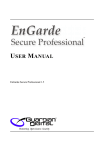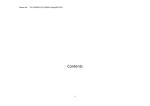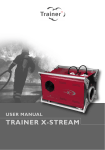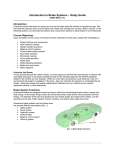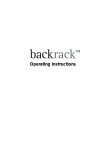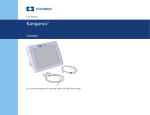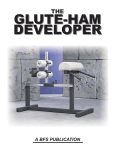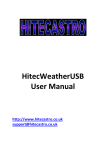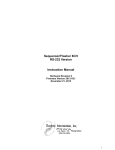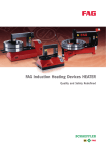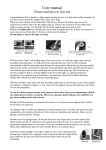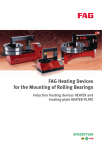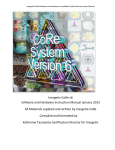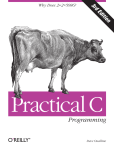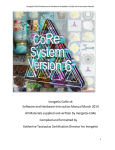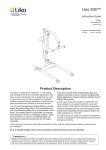Download VFIS Participant Guide Lifting and Moving
Transcript
Patient Handling Lifting and Moving Done Right! Participant Manual Patient Handling Participant Manual Please Read Carefully The information contained in this program is intended for educational purposes only. VFIS specifically disclaims any liability for any act or omission by any person in connection with the use or implementation of any information contained in this program. VFIS does not make any representations or warranty, expressed or implied, with respect to the results obtained by the use, adherence, or implementation of information, as obtained in this program. This course is intended for educational and training purposes and does not promote or exclude any patient moving device intentionally. 2000 VFIS All rights reserved. No part of this work covered by the copyright hereon may be reproduced or used in any form by any means – graphic, electronic, or mechanical, including photocopying, recording, taping, or information storage and retrieval systems – without the written permission of VFIS. 2 VFIS Patient Handling Participant Manual PATIENT HANDLING Immobilizing, Lifting, and Moving for the Patient Care Provider Table of Contents Pre-Quiz ................................................................................................... 5 Introduction............................................................................................. 7 1. Patient Drop Information ................................................................. 8 Identifying the Problem • Improper use of equipment • Improper balance/strength • Improper maintenance of equipment • Equipment failure/malfunctions • Provider haste • Scenarios 2. Injury Prevention............................................................................. 19 • Engineering controls • Administrative controls • Work practice controls 3. Lifting and Moving.......................................................................... 25 • Dynamics • Communications • Adequate Footing • Balance and Weight Positioning • The Lift – Legs v. Back v. Arms • The Rules of Lifting • Breathing • Personal Limits • Strength and Flexibility Exercises VFIS 3 Patient Handling Participant Manual 4. SOP and SOG................................................................................... 36 5. Patient Transfer and Movement Devices ...................................... 39 • Backboards • Stairchairs • Stretchers • Scoop Stretchers • Short Boards • Flexible Stretcher 6. Hands on Exercises ......................................................................... 42 Bibliography..................................................................................... 46 Glossary of Terms............................................................................ 47 Post-Quiz........................................................................................... 49 Evaluation......................................................................................... 51 4 VFIS Patient Handling Participant Manual Patient Handling Pre-Quiz Name: __________________________________________ Date: ______________ 1. How many patients are estimated, to be dropped each year? A. B. C. D. 12,000 25,000 42,000 54,000 2. Patient moving devices are designed to carry any patient needing to be moved or transported. True False 3. What lubricant is typically recommended to be used to lubricate moving parts on stretchers? A. B. C. D. WD 30 30W Motor Oil Graphite Vegetable Oil 4. How often should a wheeled stretcher be inspected? A. B. C. D. Every day Once a week At least monthly Annually 5. List the classifications of the three types of engineering controls. 1. 2. 3. VFIS 5 Patient Handling Participant Manual 6. List at least five key elements of a good work practice program. 1. 2. 3. 4. 5. 7. Your partner is six inches and fifty pounds larger than you are. You need to move a patient utilizing a stairchair. Who should be at the head end? 8. Name two suggested exercises to increase your strength and/or flexibility. 1. 2. 9. You are called to the scene of ill person. You are directed to the second floor of the residence. The patient appears to be having a brain attack. You need to get the patient down the stairs and to your stretcher for transport. You would use: A. B. C. D. The chair patient is sitting on. Your stairchair, which is still in the ambulance. Your muscles and strong-arm her. Nothing, you would make her walk. 10. List as many advantages and disadvantages of a backboard. Advantages 6 Disadvantages VFIS Patient Handling Participant Manual INTRODUCTION Every day we are called to scenes involving patient movement from simply putting a patient back in bed, to some of the most complex calls which challenge even the most experienced EMS provider. We have a variety of patient moving devices available to transfer patients from point A to point B safely. Why do we continue to drop patients? This program is intended to make patient care providers more aware of the issues surrounding patient transfer and prevent patients from being dropped. As you progress through the program consider the various devices you carry on your vehicle and the purpose of their design. There are many opportunities to improve and design new patient moving devices for our industry. When devices that have not been tested and approved for patient moving are used you are putting yourself, your crew, and the patient at risk. The liability exposure for dropping patients escalates when proper training and equipment are not used. VFIS 7 Patient Handling Participant Manual Chapter 1 Patient Drop Information Identifying the Problem Student Activity 1: List situations where patient movement is required. Situation Device you would use 1. 2. 3. 4. 5. 6. 7. Lippincott Williams & Wilkins LifeART 8 VFIS Patient Handling Participant Manual The EMS industry estimates 28 million ambulance calls are received each year in the United States. Out of these, an estimated 42,000 patients are dropped, which is about 115 patients dropped each day or one patient dropped every 12 minutes. How extensive is the problem? If we look at the problem statistically we see in a three-year period the frequency (amount of times a patient was dropped) was at a rate of 8 out of 100 claims and the severity (the portion of the claim dollars paid) was at a rate of 13 out of 100 of the dollars paid out for claims. 3 year average FREQUENCY SEVERITY Total 7.8% per year 13% per year VFIS Statistics/Risk Control The frequency of the problem seems minimal, however if we look at the severity we can see the magnitude of the problem. Insurance considers a severity percentage greater than 10% a significant problem and loss control measures need to be implemented. The statistics clearly identify the need for us, as an industry, to take a closer look at how we are handling patient movement. What can we do better to prevent the amount of patient drops occurring each year in our industry? After all, our community’s perspective of a professional patient care provider is a person arriving on-scene in a timely fashion, to treat them in a proper fashion, and to move them in a safe manner. We can attribute the incidence of patient drops to a few generalized areas: • Improper use of equipment • Improper balance/strength • Improper maintenance of equipment • Equipment failure/malfunctions • Provider haste Improper use of equipment An EMS crew was carrying a patient downstairs on an ordinary chair. The chair broke and the patient fell to the floor. The patient sustained back injuries. There are various types of patient moving devices on the market. We are inundated with new pieces of equipment coming on the market every day. Each piece of equipment has been designed with a specific purpose for the pre-hospital setting. We need to remember there is not one device VFIS 9 Patient Handling Participant Manual that is so versatile that it can be utilized in any situation. Therefore we must have an assortment of devices available for use in any given situation. The most fundamental precaution we can start with is proper training in the use of each piece of equipment we have available for patient movement. Let’s begin by listing the equipment currently available for patient movement/transfer. Student Activity 2: List all pieces of equipment available for transport/transfer of patients and identify their practical uses. DEVICE USES We will discuss each device in more detail as we progress through the program Improper balance/strength • Difference in crew members: strength, height, and weight • Patient height and weight • Scene conditions Every individual has a unique physical design. We need to be able to utilize the strengths and identify the weaknesses of each patient care provider. The ideal crew would consist of a minimum of two individuals with compatible strength, height, and weight to allow proper balance and lifting of patient movement devices. We know this is not always possible. The crew needs to be able to recognize the abilities of the other member and strategically place themselves in a proper lifting/carrying position. For example: Two individuals of unequal height may want to have the taller individual at the foot end of a 10 VFIS Patient Handling Participant Manual stairchair to offset the height difference. Or, if one individual has more strength capability, the stronger of the two is best suited for the head end of the stretcher. These unequal physical attributes of crewmembers should not be viewed as negatives, but identified as potential problems should we not utilize the individual in the most suitable position. We also need to have crews recognize when a situation is beyond the capabilities of the providers on the scene and require additional help. Some examples may include: • Overweight patients • Icy or slick surfaces • Extrication on an incline or decline • Inability of crewmembers to safely move a patient The patients we transport are just like us. They are different heights and weights. Our devices are designed for a standard size person. We need to adjust to the patient who is taller than the length of our moving devices and compensate for the additional height of the patient. Each device also has a manufacturer’s weight limit for that particular device. We must be aware of the limitations of our equipment. We also must be sensitive to the height of the patient-moving device during patient transfers. The higher the wheeled stretcher is during transit, the greater the chance for the stretcher to tip over. Also, the higher we carry someone, the greater the chance our center of balance will be thrown off. This may cause us to drop the patient. As the EMS crew was lowering the patient to the ground, the police officer lost footing causing the patient to slide off of the board to the ground. VFIS 11 Patient Handling Participant Manual The situations we are called to can involve any given terrain or climate. We encounter patients on upper levels of buildings who need to be extricated down stairways. We find ourselves at motor vehicle accidents where the patient needs to be carried up an embankment or moved down a steep slope. Weather also plays a role when we need to transport patients across icy or slick surfaces. Improper maintenance of equipment The patient was being transported to the hospital in a fowler’s position on the stretcher. The stretcher suddenly fell back, startling the patient. The patient sustained back injuries. • Lack of scheduled maintenance • Improper maintenance • Lack of documentation • Alteration of equipment Each piece of equipment comes with a user manual that describes proper use of equipment, warranty information, parts and components, and the maintenance of the device. How many times have we looked at the front cover, glanced through a few pages, and finally filed it in a safe area where we can retrieve it for further referencing when needed? An individual within the department needs to be designated to be in charge of portable equipment. The same person should also be responsible for the manuals and documents regarding the portable equipment. The manual is usually discarded or filed and never seen again. We need to familiarize ourselves with the equipment manuals. The manuals prescribe a maintenance schedule for the device. It is also important to maintain a log documenting the maintenance performed on equipment. It is imperative to remove the device from service for necessary repairs any time you discover an unsafe device, mechanical problem or physical defect, which jeopardizes the safe movement of the patient. It also has been noted that the wrong lubrication is frequently used to lubricate the mechanical moving parts. For example: one manufacturer recommends the only lubricant to be used on their products should either be 30W Motor Oil or Lithium Grease on all moving parts. They further state that using the wrong lubricant may cause damage to the product. The latches, hinges, straps, wheels, and bearings are essential components and must be properly inspected and maintained on a regular basis. You need to remember, altering the device or using the wrong materials on the device usually negates any warranty by the manufacturer. A common alteration on wheeled stretchers is removal or non-use of the 3-point harness strap. A manufacturer can, and in most instances will, negate any warranty or refuse to assume any liability for 12 VFIS Patient Handling Participant Manual devices if it has been altered malfunctions or is not used in concert with the design by the manufacturer. Additionally, acts such as this will increase your organization’s exposure to liability. It is essential to clean, lubricate, inspect, and document the various devices we utilize following the same procedure we do with our vehicles. Remember, the vehicle is used to transport patients and crewmembers, however, it takes a patient-moving device to get the patient to and from the vehicle. There are companies who specialize in the service and repair of patient handling equipment and will perform this on a contractual basis. Examples of some of the services they provide are: Preventive Maintenance • Cleaning • Inspection • Lubrication Equipment Tune-up • Hardware tightening • Alignment adjustments Equipment Evaluation • Reveals needed repairs • Detects potential problems Usage Evaluation and Training VFIS 13 Patient Handling Participant Manual • Reveals improper usage Report • Documentation of preventive maintenance Additionally, they may include all frame repairs and the replacement of all parts of the wheeled stretcher. Equipment failure/malfunctions Two EMS unit’s crewmembers were moving the patient from the unit into the Emergency Room and the stretcher collapsed to the ground. The patient suffered a back injury. • Equipment inspection and documentation • Lack of training The lack of equipment maintenance and inspection may lead to equipment failure/malfunction. In turn this almost always leads to litigation. It will be the organization’s burden of proof to demonstrate that the failure or malfunction was not a result of their negligence. The service will need to show proof of competency and training in the device. The device will need to be immediately removed from service for proper inspection and to identify any malfunctions or defects. Wheeled stretchers should be inspected at least once a month or more frequently by a certified mechanic or certified crewmember. Confirm that inspections and follow-up are effective by looking for wear, cracks, missing parts, and the use of substandard parts on manufacturer specific equipment. Equipment logs are maintained to define a maintenance schedule, record maintenance performed, and the results of tests carried out in accordance with manufacturer specifications. A quality assurance program should be identified that uncovers repetitive specific manufacturer areas, i.e. straps, wheels, etc. VFIS recommends annual training in each device the service utilizes for patient movement and transfer. An EMS crew had to move the patient from the ambulance stretcher to the bed at a patient’s residence by means of a draw sheet. In the process, the sheet slipped from the head, causing patient to drop to the floor. The patient sustained right flank and lower back pain. Provider haste • Improper lifting • Utilizing the wrong device 14 VFIS Patient Handling Participant Manual • Provider’s excitement level Provider haste can be both detrimental to the patient being moved and to the careprovider. Care providers don’t always take the appropriate amount of time to regulate, lift, and operate the mechanisms of the patient-moving device correctly. This poor procedure can cause patient injuries as well as provider injuries. Therefore, it may affect both the agency’s liability policy and the worker’s compensation policy. A patient was having chest pain. The EMS crew dropped the patient while removing them from their residence. The patient sustained injuries to their head and back. Proper lifting begins with a conscientious effort every time we lift. If we practice lifting objects with our legs and not our back, it will become common practice to use our legs when we lift patients on patient moving devices. The equipment is designed for lifting in a certain manner; we need to have personnel properly trained on the lifting technique for each of the devices available. An EMS provider suffered back injury when lifting a patient from the ground to the stretcher on a backboard. The EMS provider said it was uncomfortable lifting using their knees and bending at the back was so much easier. The EMS provider is permanently disabled from working due to a back injury. EMS providers sometimes become complacent after running call after call. There are instances when using a patient’s chair, such as their dining room chair, seems easier than going back to the unit to get a stairchair. What happens when the dining room chair fails and the patient is dropped? We have now created a situation that easily could have been avoided if we had taken just a few minutes to go back to get the proper equipment. The patient’s furniture is not designed as a patient moving device and should never be substituted as a patient-moving device. The proper piece of equipment must be used for the specific situation. We all know of those whose adrenaline may elevate a little higher than others. It may even be you. We have heard those old adages – “Haste makes waste”, “Take a deep breath first”, “Check your pulse.” These may sound silly, but they make you remember you need to slow down. Mistakes are often made when we try to rush things. The only time speed is a factor at all is in a lifethreatening rescue, when you need to remove a patient expediently from a hazardous environment. Even in these situations we need to ensure safety first, then attempt the rescue. VFIS 15 Patient Handling Participant Manual Lippincott Williams & Wilkins LifeART Slow down, take in the whole picture, use your equipment properly and it may prevent a patient drop or an injury to a crewmember. Scenarios Student Activity 3: As we look at some examples of incidents involving patient moving and transfer, identify whether you believe it was equipment failure or personnel failure that caused the incident. 16 VFIS Patient Handling Participant Manual • The patient was dropped from the stretcher upon arrival at the hospital. The patient complained of a sore shoulder. • While transferring Mr. Smith from bed to the stretcher, a lamp was knocked over and broken. • The ambulance crew bumped into a china cabinet resulting in broken china. • The patient was being transported back to their home on a stretcher. The patient was being carried up the steps when the stretcher tipped and the patient fell onto the ground striking the right side of her body. The patient had to be transported back to the hospital. • During transport, the ambulance stopped suddenly causing the patient’s ventilator to fall on the EMS crew. The patient sustained a laceration on the left thigh. • The patient was being transported for “Black-outs”. The EMS crew placed the patient on the board and dropped her twice on the way to the ambulance. The patient sustained a back injury. • A diabetic patient was being transported out of an apartment building; the EMS crew bumped the patient’s face on the stairway ceiling causing three teeth to be knocked out. • The fire chief’s personal vehicle suffered a broken mirror when the EMS crew was transferring the patient on the stretcher and hit the chief’s vehicle. • While moving the patient from the house on a stretcher, the husband got in the way and the patient was dropped. • While removing the patient from the ambulance on a sloping ramp at the hospital, the head of the stretcher rolled and the stretcher tipped and the patient fell to the ground. The patient suffered a broken clavicle. • While transporting a patient from a nursing home, the EMS crew caught the patient’s leg under the wheelchair and broke it. The patient later died – causes unknown. There are many, many more examples. Some scenarios play out the same way. Here are a few others to think about. The patient was dropped during a transport and sustained a broken leg. The patient alleges a spinal injury due to improper handling. An EMS crew pushed the stretcher up to the patient’s house and the loading wheel struck the glass on the storm door and broke the window. The patient suffered a broken arm when the crew tried to get the patient into a wheelchair for transport. The patient suffered injury to the right side, including a hematoma to the head and pain in the right shoulder when the patient’s weight shifted as the EMS crew was placing the patient on the stretcher and the stretcher tipped over. A crewmember fell on the patient while unloading the patient from a stretcher. VFIS 17 Patient Handling Participant Manual Can you relate to any of these scenarios? Summary The number of patient drops and injuries to patient handlers can be significantly reduced if we take into consideration a few generalized areas. First, we need to use the proper patient moving device for the specific situation. Second, we need to take into account the strength of the care providers and concentrate on maintaining our balance. Third, we need to assure our patient moving devices receive the appropriate maintenance. Fourth, equipment that is maintained will help reduce the potential for equipment failure. And last, as patient care providers we need to slow down and take planned actions when moving a patient. 18 VFIS Patient Handling Participant Manual Chapter 2 Injury Prevention Ergonomics is a developing science, aimed at enhancing the healthy interrelationship of humans, machines, and the work environment. Simply put, ergonomics is the practice of making the work environment safer and more productive for the worker. We need to identify the ergonomic hazards involving our activities in EMS. In relation to patient movement we can easily identify three work hazards: 1. Moving victims from • Multistory buildings or homes using stairways • Up and over embankments or inclines • Down sloping terrain 2. Moving patients • On to and off of stretchers/gurneys • Loading stretchers/gurneys into ambulances 3. Moving victims in any other situation we may encounter It is important for us to understand that this subject really has a twofold purpose. One is to reduce the number of injuries to patient care providers from lifting and moving patients which in turn helps to decrease the number of patient drops. We can begin by putting an injury prevention program together for our personnel. There are three basic types of ergonomic controls we can institute: 1. Engineering controls 2. Administrative controls 3. Work practice controls VFIS 19 Patient Handling Participant Manual Lippincott Williams & Wilkins LifeART Engineering Controls Engineering controls are defined as the changing of the work place or equipment used in the work place to reduce or eliminate ergonomic hazards. Engineering controls are generally classified as three types: 1. Workplace environment 2. Work method design 3. Tool design Workplace environment allows the patient care provider to be more comfortable by adapting the work environment. Unfortunately, this is not always appropriate since we are called into situations where the work area or scene, is beyond our control. Two EMS workers were assisting a patient down an ice-covered stairway. They lost their footing and slid down the entire flight of stairs. Both sustained lower back injuries and were off work for more than a month. 20 VFIS Patient Handling Participant Manual Examples: • Patient down over embankment • Patient on third floor • Patient in a bathtub • Plush carpeting on stairs • Ice covered surfaces Work method is the second area of engineering controls. We need to be aware of equipment design prior to purchase. We must ensure that our personnel use the equipment appropriately. Examples: • Equipment has proper handles • Backboards have proper strapping The patient slid off the stretcher. The patient sustained a shoulder injury. Was the patient properly strapped on the stretcher? The third engineering control is tool design. For example, at one time there were backboards with an adequate amount of grip holes. However, when lying on a smooth surface there was no place to grasp since there were no runners to elevate the board far enough off the ground to give ample room to grasp the board. The boards are designed with runners on the bottom or are contoured to allow easy grasping of the hand holds on the board. If the hazard cannot be controlled through engineering, the next two options are administrative and work practice controls. These methods are not as reliable. We need to provide constant monitoring to ensure that administrative controls are followed. Administrative Controls Management enacts or approves administrative controls that make them an important element of our injury prevention program. The following examples illustrate some administrative controls that can be used. VFIS 21 Patient Handling Participant Manual • Increase the number of personnel assigned to the task. Adequate staffing is a critically important consideration for decreasing personnel injury rates as the work is spread out over a larger base. This will aid in the reduction of stress when lifting heavy patients. • Use personnel rotation of assigned tasks when functioning at the scene of an incident. For example, rotate staff by having the crew switch carrying the patient from one floor to the next. EMS crewmembers must understand that sometimes it is impossible for management to match members evenly. It is not management’s responsibility, but the EMS crew’s responsibility to: 1. Size-up the scene 2. Identify the needs by matching crew members capabilities with the needs 3. Call for more help if needed The EMS crew, when arriving on the scene, needs to take the whole scene into consideration. The crew needs to think about how they are going to get the patient from the scene to the ambulance for transport. Do they have the right equipment to move the patient and are there enough personnel on the scene to safely and properly move the patient? Management cannot make the decision for you, however they need to provide the support for you to make the best judgment for the situation. Management needs to consider agreements with other agencies for lift assist. Many agencies are concerned with their liability in subjecting their personnel to lifting injuries and are reluctant to assist. The time you need assistance is not the time to determine, who to call and who will help. 22 VFIS Patient Handling Participant Manual Work Practice Controls The last area of concern for an effective program for hazard prevention and control includes procedures for safe work practices. Officers, staff, and line personnel must understand and follow the established work practice controls. Key elements of a good work practice program include: • Size-up of scene • Proper work techniques • Training • Personnel body conditioning • Regular monitoring • Feedback • Adjustments • Modification • Maintenance/repair Personnel must be trained in work practice controls that consist of demonstrations and practice time. The following examples show work practice controls. VFIS • Proper scene size-up and evaluation • Appropriate partner pairing and utilization of abilities • Task approach to improve posture and reduce stress on extremities and spine 23 Patient Handling Participant Manual • Proper lifting techniques • Proper use and maintenance of patient lifting devices • Use of ergonomically designed equipment Work practice controls need to be monitored with frequent feedback provided to personnel. To ensure proper feedback the following questions should be asked: • Are specified procedures being used? • Are the procedures an improvement over the previous method? • Is re-training necessary? • Are the maintenance programs satisfactory? • Were SOGs followed? Summary A combination of the three ergonomic controls: Engineering Controls; Administrative Controls; and Work Procedure Controls; are essential to maintain a well-balanced program in the reduction of personnel injuries and patient drops. It is imperative the program is monitored, updated, and revised as necessary. 24 VFIS Patient Handling Participant Manual Chapter 3 Lifting and Moving Dynamics There are a variety of motions that put stress on our backs: lifting, carrying, pushing, pulling, and reaching. These repetitive motions also are the most common causes of back injuries. When the weight of the object being lifted and an imbalance of the force being generated by the muscles occur damage is incurred. Correct body mechanics, good task design, and a healthy back provide a solid foundation for preventing back injuries according to ergonomic studies. Lippincott Williams & Wilkins LifeART The anatomy of the back is a complex system of ligaments, muscles, bones, nerves, and intervertebral discs. The intervertebral discs, the ligaments, and the muscles are most frequently injured. The spine consists of thirty-three bones called vertebrae. The shape of the spine is aligned in a gentle S curve which allows shock reduction from our normal activities of walking, running, jumping, and riding in a car. The first seven bones comprise our cervical vertebrae. They have a slight inward curve. The cervical spine has a greater risk for injury due to the lack of any significant protection. The next twelve vertebrae are the thoracic vertebrae. They have a gentle outward curve, which is called the thoracic kyphosis. The posterior points of the ribs connect to the thoracic vertebrae, which provide more protection to this portion of the spine. The lumbar vertebrae consist of the next five vertebrae. This portion of the spine is the most vulnerable when it comes to spinal injuries. The inward curve of the lumbar is called the lordosis. Any abnormal curvature of this portion of the spine can result in low back pain and injury. Maintaining this normal curve while sitting, standing, or lifting helps to prevent injuries. VFIS 25 Patient Handling Participant Manual There has been a lot of discussion on the reduction of back injuries from wearing a lumbar support device or back belt. The use of back belts by weightlifters has increased awareness of the potential aid the back belt may contribute to reduction of lower back injuries. One of the reasons weightlifters use back belts is to serve as a reminder to maintain normal lordosis. There is no conclusive evidence that back injuries are prevented by the use of a back belt other than the awareness it provides to the person lifting to keep their back straight. For additional information on back belts please refer to the references cited in the back of this publication. Communications How many times have we heard “the problem around here is no one communicates”? This goes for patient movement too. Whether we work with the same partner on every call or this is the first time, clear, concise communication is of the utmost importance to aid in the reduction of patient drops and provider injuries. How often has it been said “whatever you learn in the classroom forget it, this is the real world and we do it differently”? The stress of clear communication with the person at the head giving the commands is essential for safe patient movement, just like it is taught in the classroom. Adequate Footing Two EMS crewmembers were suspended after they were advised not to wear sandals on calls. One of the crewmembers was injured from a stretcher rolling over their foot while wearing their sandals on a call. Patient care providers find themselves on a variety of terrain involving patient handling. For example, removing patients from vehicles, climbing ladders, descending and ascending stairways, lifting patients in obscure positions, and walking on surfaces less than optimal. It is imperative for personnel to choose foot protection to aid in the assurance of adequate footing. It is recommended that personnel wear a sturdy ankle-high shoe with steel toes and slip resistant soles. Good ankle support decreases the risk of turning an ankle and steel toe shoes reduce the chance of fractured toes should a heavy object fall on your foot. The tread should provide a non-slip, oilresistant material to aid in footing. A keen awareness of your surroundings is also vital. Assuring proper footing with each step you take will help reduce the chances of personnel slipping and patients being dropped. A crewmember designated as the safety leader should be in place to back each patient handler to help reduce the amount of patient drops. Example: • A safety person should be behind the lower individual carrying a stairchair to aid in stability. 26 VFIS Patient Handling Participant Manual Balance and Weight Positioning In much the same manner as weightlifters position themselves to lift weights, patient care providers must do the same. If the load shifts, the crew leader should stop the procedure. The crewmembers need to reposition and re-establish their proper balance. As discussed earlier, personnel need to position themselves to optimize their strengths. Distribution of the weight load is essential to maintain the balance needed to move patients in a safe manner. The Lift - Legs v. Back v. Arms How many times have we heard, “lift with your legs not your back?” It is the combination of the legs, back, and abdominal muscles working together that allows us to lift in a safe manner. When the back and abdominal muscles contract together, the back “locks” into a normal lordosis to maintain the lordosis throughout the lift. The legs, buttocks, and thighs work actively to raise and lower the body and the weight. The farther away the weight is from the body, the harder the muscles have to work. It is imperative you keep the weight as close to the body as possible. Lift in a smooth, continuous motion, never with fast, jerking motions. Bending over to lift is extremely dangerous to the spine, especially if one bends and twists simultaneously. VFIS 27 Patient Handling Participant Manual The Rules of Lifting 1. Know the weight (ask the patient’s weight if you can and add to the weight of the equipment). 2. Know your physical abilities and limitations and also those of your partner. 3. Keep your back locked in a normal lordosis. 4. Use your leg, abdominal, and back muscles. 5. Keep the weight close to your body. 6. Communicate clearly and frequently with your partner. Breathing Weightlifters optimize their lifts by exercising proper breathing techniques. Never hold your breath or grunt when lifting patients. When you do, it causes additional strain. Exhaling forcefully and evenly during a lift can actually add power to your effort. Personal Limitations Lifting is an essential part of everyday patient care. Patient care providers must be in proper condition to perform a variety of lifts and moves. Every person is different and abilities change, selfawareness is imperative for patient care providers to realize when exhaustion, minor illness, or dwindling energy from a busy shift make certain lifting tasks risky. It is never appropriate to jeopardize the safety of yourself, the patient, or other crewmembers by overextending yourself to prove your capabilities. It should never be considered wrong to ask for additional assistance to lift or move patients. Three considerations need to be decided in addition to the weight load prior to performing a lifting procedure. First, is the position of the load. For example, the 220-pound person who has fallen in the shower. Second, what is the distance and terrain the load is to be carried over? For example, the patient who needs to be removed from the third floor, down a narrow staircase. And third, you need to consider the repetition factor. For example, is this the thirteenth patient you have lifted today or is it the first? 28 VFIS Patient Handling Participant Manual Strength and Flexibility Exercises There is one thing for certain: you only get one body. What you do with it depends solely on you. As discussed, lifting and moving take both strength and flexibility. When we think of strength and flexibility improvement, we tend to think of joining a health club or buying a variety of commercially advertised body improvement devices. It is not necessary to go to this level of body improvement. We can do a few simple exercises three to five times a week. When done properly, these exercises can modify strength, fitness, and risk-taking behavior. Exercises It is important to note that stretching is an integral part of any exercise program. People vary in range of flexibility. The goal is to rid you of the tightness and stiffness within the muscle groups. When done properly you will not feel as much tension in those muscles. Stretching should be done at a slow pace. When done properly stretching will feel good. Be careful not to overstretch and do not bounce to stretch a muscle; you risk hurting yourself. Stretch for 15 seconds in a position where you feel slight tension. The pressure will start to be reduced. Stretching consistently over a period of time can only help you. Remember, this is for you. Enjoy it! VFIS 29 Patient Handling Participant Manual Specialized Exercises for the Out-of-Hospital Care Provider Stretching and Strengthening Exercises THE CAT BACK STRETCH The Cat Back Stretch improves flexibility of the entire spinal column. Flexibility of the spine improves its range of motion, thus limiting the chances of injury. Proper Technique 1. Position yourself on your hands and knees. Allow your back to sag (sway back) and extend your head back. Hold for a moment. 2. Bend your head forward and arch your back upward like a cat. Hold in this position for a moment. Perform two sets of 20 with a one minute rest between sets. 30 VFIS Patient Handling Participant Manual THE BACKWARD FLY The Backward Fly exercise helps strengthen the triceps. The triceps are not strengthened in your day-to-day activities. Proper Technique 1. Lie on your stomach, with your arms at your side and palms toward your body. 2. Lift your arms backward and lower them slowly. Perform two sets of 12 with a oneminute rest between sets. VFIS 31 Patient Handling Participant Manual THE KNEE-TO-CHEST The Knee-to-Chest exercise lengthens muscles that keep your lower back stable and flexible. Proper Technique 1. Lay on your back with both legs bent and your feet flat on the floor. 2. Grasp one thigh behind one bent knee and slowly pull it to your chest while keeping your other foot on the floor. Hold for 5-10 seconds, and then switch to the opposite leg. Repeat five times for each side. 32 VFIS Patient Handling Participant Manual THE QUADRICEP FEMORIS STRETCH The Quadricep Femoris stretch lengthens the front thigh muscles. Leg extensions will help the muscle stabilize your knees and assist you in climbing stairs. Proper Technique 1. Stand on one foot and grasp the ankle of the foot in the air. Pull your heel to your buttocks and hold for 10-15 seconds. Release and repeat with the opposite leg. Perform this exercise three times on each leg. 2. A good adjunct to this stretch is leg extensions. Sit on a chair and extend your leg. Hold for a moment and return to the neutral position. Perform two sets of 10 for each leg. Ankle weights can be used in this exercise. VFIS 33 Patient Handling Participant Manual REVERSE FLY The Reverse Fly exercise is one of the few exercises that specifically work to strengthen the diamond shaped area between your shoulder blades, the rhomboid muscles. Proper Technique 1. Lie on your stomach, with your arms extended out (like a swan dive). Lift your arms up (like a bird flying) with your palms down. 2. Lift your hands toward your chin while exhaling. Keep your elbows pointed up and out. Hold this position for a moment and lower slowly. Hand-held weights can be added for additional strengthening. Perform two sets of 12 with a one minute rest between sets. Advanced: Stick out your thumbs (like a hitch hiker), point thumbs up toward the ceiling while doing the exercise. There are a variety of programs which promote strength and flexibility exercises designed for personnel who handle patients. You may also contact VFIS for information on available back safety programs. These programs are designed specifically for fire and EMS personnel and the proper lifting techniques coupled with the exercises designed to decrease your risk of back injury. We encourage you to find a program and begin your strength and flexibility improvement program today. 34 VFIS Patient Handling Participant Manual Summary Lifting and moving is involved in virtually all of our patient transfers. As a patient care provider, you need to understand the dynamics that lifting and moving patients have on your body. It is imperative you communicate with all members involved in moving the patient. Clear, concise communication will help reduce the potential for injury and the potential for dropping a patient. Adequate footwear can be the best investment you can make for yourself. Adequate footwear protects and supports you and gives you the traction and footing necessary to assist in the patient move. Keep in mind, balance, weight positioning, using your legs versus your back, breathing techniques, and knowing your personal limitations are all essential components that enable you to perform a proper lift and carry patients over less than adequate terrain. Finally, strength and flexibility exercises should be incorporated into your daily activities. You only get one body, do what you can to keep it in shape. VFIS 35 Patient Handling Participant Manual Chapter 4 SOPs and SOGs Many companies do not have Standard Operating Procedures (SOPs) or Standard Operating Guidelines (SOGs), which address the proper training, operations, maintenance and inspection of their patient moving/transfer devices. A SOP and/or SOG should be developed to address each of these areas. During an open house for a Boy Scout Troop, a visitor volunteered to be a patient and the crew dropped him while on the stretcher. The visitor now became a patient with a cut on the nose. A SOP/SOG should also be considered for: • • • Physical fitness of EMS personnel Procedures if a patient drop should occur Injuries to EMS personnel Where do you start? It is not practical to think you can develop, implement, and enforce an SOP/SOG for each of these areas overnight. The development of SOPs and SOGs is not a onetime event. Careful planning and review is critical to ensure the appropriate SOP or SOG is in effect. There are key words, which delineate SOPs from SOGs. Here are some examples of these words: SOP Will Shall Must SOG May Should Can The first step is to decide, as an organization, what topic you feel is the most critical. Training and maintenance may be a good topic to start with. By implementing this training program you have actually started the process. You need to make it into a SOP/SOG at this point. Utilizing a Standard Operating Guideline provides more flexibility when certain conditions arise. The ability of personnel to be able to make decisions is essential given the latitude of the unusual situations emergency service providers encounter. To begin your development process, start with a core group of individuals. Utilize the talents of the members of your organization. Educators, managers, attorneys, and accountants are a few of the professionals you may consider as part of your team. Don’t forget about your personnel who 36 VFIS Patient Handling Participant Manual are in the trenches on a daily basis doing the job. Keep your group to a manageable number so you can accomplish the task at hand. When you begin, start by gathering information pertinent to the topic. There are a variety of departments who already have SOP/SOGs in place. There is no need to reinvent the wheel. If you do use another department’s SOP/SOG, use it as a guideline. The SOP/SOG needs to be relevant to your department’s needs. The SOP/SOG should follow the standard format of the other SOP/SOGs of your department. A guideline to follow would be a title section, which would include: • Subject • Guideline number • Adopted date • Effective date • Revised date • Due for revision date • Page __ of __ The body of the SOP/SOG needs to include: • Policy • Requirements • Procedures Policy should be a statement of what management intends the SOP/SOG to accomplish. Requirements are items needed to make the SOP/SOG work. Procedures describe what to do in a particular situation. The Internet has become an integral part of life. It is a means for departments to communicate and share information. There are a number of departments with web pages; it is just a matter of finding them. There are a variety of bulletin boards and other links with Internet access. For further information on the development of SOPs and SOGs please contact your VFIS representative to schedule a training session devoted to this topic. VFIS also provides consulting VFIS 37 Patient Handling Participant Manual services devoted to developing and reviewing SOPs/SOGs. Contact your VFIS representative or call VFIS at 1-800-233-1957. 38 VFIS Patient Handling Participant Manual Chapter 5 Patient Transfer and Movement Devices There are a variety of patient transfer and movement devices we identified at the beginning of the program. Let’s take a look at some of the aspects of each device. Lippincott Williams & Wilkins LifeART 1. Backboards Advantages: good spinal immobilizer; good lifting device; can float; light; compact; can serve as a CPR surface; mechanically simple; x-ray translucent; can be carried and loaded from ends or sides; integrates well with various other equipment. Disadvantages: must be carried; usually must be left with patient; unstable for moves up or down inclines; uncomfortable; may weaken with time. Features: available in a variety of styles from different manufacturers. Usually have holes spaced along the ends and sides of the board for handholds and insertion of straps. Usually six to seven feet in length. Inspection, cleaning, repair, and maintenance: follow manufacturer directions as listed in the owner manual. 2. Stairchairs Advantages: good for use on stairways, narrow corridors and doorways, small elevators; can be used in narrow aisles in aircraft or buses. Some models can be converted into portable stretchers. Disadvantages: must be carried; does not accommodate trauma patients; should not be used for patients with altered mental status; fairly complex; consumes considerable space; should not be used when lower extremity injury, or neck or spinal injury patient must be transferred from stairchair to stretcher prior to loading patient into ambulance. Features: ability to move patients up and down staircases, through narrow halls, and in small passages where stretchers may not fit. There are a variety of stairchairs on the market VFIS 39 Patient Handling Participant Manual including some which convert to a portable stretcher and a new model, which allows the patient to be wheeled up and down the stairs. Inspection, cleaning, repair, and maintenance: follow the manufacturer directions as listed in the owner manual. 3. Stretchers Advantages: enables movement without carrying; accommodates positions, heights, and lengths; safe traversal of curbs; can be lifted or lowered from end or sides; durable; mechanically simple; comfortable. Disadvantages: difficult to load and unload by two rescuers, x-ray opacity, the center of gravity becomes an issue when the stretcher is in the up position. Inspection, cleaning, repair, and maintenance: follow the manufacturer directions as listed in the owner manual. 4. Scoop stretchers Advantages: can be used in confined areas in which other stretchers will not fit; allows easy application of restraints; integrates well with various other equipment. Disadvantages: must be carried; requires padding of head and bony prominence; should be pre-warmed if air temperature is cold; not recommended for patients with suspected spinal injury; consumes considerable space. Inspection, cleaning, repair, and maintenance: follow the manufacturer directions as listed in the owner manual. 5. Short boards Advantages include: able to immobilize someone in a sitting position; useful for patients in cars and confined spaces. Disadvantages include: time to put the device on the patient. Features include: available in wood, aluminum, or plastic. Inspection, cleaning, repair, and maintenance: follow the manufacturer directions as listed in the owner manual. 40 VFIS Patient Handling Participant Manual Lippincott Williams & Wilkins LifeART 6. Flexible Stretcher Advantages: especially useful for narrow and restricted hallways; can be carried from sides or ends. Disadvantages: must be carried Inspection, cleaning, repair, and maintenance: follow the manufacturer directions as listed in the owner manual. VFIS 41 Patient Handling Participant Manual Chapter 6 Hands on Exercises Lippincott Williams & Wilkins LifeART Exercise 1 Proper immobilization with a backboard Setting: The patient needs to be immobilized on a backboard with proper sized cervical collar in place. The patient needs to be secured to the board with an appropriate amount of straps. Movement: Have providers move the board with patient from the ground and carry a few feet, then place the board onto wheeled ambulance stretcher. Lippincott Williams & Wilkins LifeART 42 VFIS Patient Handling Participant Manual Exercise 2 Proper use of a stairchair Setting: Have patient securely fastened to stairchair. Ensure that hands and legs are secured. Movement: Have crewmembers move the patient down one flight of stairs and then up one flight of stairs. Ensure proper safety measures when working on a stairway. A minimum of three crewmembers is essential for safe movement. Exercise 3 Utilizing wheeled stretchers Setting: Begin with an empty stretcher and proceed through the exercise. After completion of the exercise, repeat with an individual properly secured on the stretcher. Movement: Move stretcher out of the ambulance. Raise the stretcher to the highest point. Move the stretcher a few feet. Lower the stretcher to the lowest point and move it a few feet. Perform a four-person carry with an individual at each corner of the stretcher. Load the stretcher back into the vehicle. Exercise 4 Use of a scoop stretcher Setting: Have a person lie in a supine position. Place person in a variety of settings, start by having the person lie on the floor, then have the person lie in a narrow hallway. Movement: Practice putting a person on a scoop stretcher, moving the stretcher then transferring the patient to the stretcher and taking the patient off of the scoop stretcher. Lippincott Williams & Wilkins LifeART VFIS 43 Patient Handling Participant Manual Exercise 5 Proper immobilization with a short board Setting: The person is in a sitting position. Begin by immobilizing the person sitting on a chair; continue by placing the person in a vehicle and immobilizing them sitting in a vehicle, first as the passenger, then as the driver. Movement: Immobilize the person on a short board then place that person on a backboard and properly secure from the above settings. Lippincott Williams & Wilkins LifeART Exercise 6 Carries/Lifts Setting 1: The patient is sitting in a chair and needs to be transferred to the stretcher. Movement: Extremity lifts – Do a cross arm on the patient’s upper torso, second rescuer reaches under both knees and lifts the patient to the stretcher. Lippincott Williams & Wilkins LifeART 44 VFIS Patient Handling Participant Manual Setting 2: The patient is lying on the stretcher and needs to be transferred to the bed. Movement: Loosen bottom sheet and grasp the sheet at the top. The second rescuer grasps the sheet at the bottom. Lift the patient to the bed. Then reverse the process. Ideally, the surface you are lifting from should be higher than the surface you are lifting to. Exercise 7 Use of any other devices If there are any other devices your agency uses, now is the time to get them out and practice. Use the manufacturer recommendations for proper use during your training program. VFIS 45 Patient Handling Participant Manual Bibliography EMS Safety Techniques and Applications Federal Emergency Management Agency United States Fire Administration EMT: Injury Free Ferno® 70 Weil Way, Wilmington, OH 45177-9371 (800)-73-FERNO Fire and Emergency Medical Services Ergonomics Federal Emergency Management Agency United States Fire Administration Brady Prehospital Emergency Care 5/e Brady Hafen, Karren, Mistovich Chapter 39, pages 732:738 The Basic EMT Mosby McSwain, White, Paturas, Metcalf Chapter 10, pages 152:176 Aehlert’s EMT Basic Study Guide Aehlert Chapter 6, pages 106:117 Back Reaction Program Grennan Stryker EMS Rugged Stretchers 6300 Sprinkle Road, Kalamazoo, MI 49001-9799 (800)RUGGED6 VFIS Education and Training Services www.vfis.com 46 VFIS Patient Handling Participant Manual Glossary of Terms Administrative Controls: A written standard operating policy or guideline governing equipment used, the number of personnel utilized and/or procedures employed to reduce the potential for injury. Engineering Controls: Standardized equipment used to prevent injury while performing the essential functions of the job. These can include; workplace environment, work method design, tool design. Ergonomics: The science of fitting the job to the worker. EMS: Emergency Medical Services. Fowlers: A patient who is in the sitting position with knees bent. Dynamics: A branch of mechanics that deals with forces and their relation primarily to the motion but sometimes also to the equilibrium of the body. Haste: To move or act quickly. Lordosis: The natural inward curvature of the lumbar spine. Ligaments: A tough band of tissue that connects bone to bone. Intervertebral disc: A jelly-filled, sponge-like tissue located between each vertebrae that acts like a shock absorber for the spine. The disks also add flexibility of movement to the spine. Thoracic Kyphosis: The natural outward curve of the thoracic spine. Translucent: Permitting the passage of light. An example is a spine board that allows the patient to be x-rayed without moving the patient from the board. Vertebrae: The bony structures that make up the spine. The back is made up of 7 cervical vertebrae, 12 thoracic vertebrae, 5 sacral vertebrae and 1 coccygeal vertebrae. VFIS 47 Patient Handling Participant Manual 48 VFIS Patient Handling Participant Manual Patient Handling Post-Quiz Name: __________________________________________ Date: _______________ 1. What is the result of removing the 3-point harness on the wheeled stretchers? A. B. C. D. Makes it easier to secure a patient. It has no negative or positive effect. It negates the manufacturer’s warranty. It provides extra straps for other purposes. 2. What are the three components of a preventive maintenance program? A. B. C. D. Cleaning, Licensing, Lubrication. Alteration, Inspection, Lubrication Cleaning, Inspection, Loosening Cleaning, Inspection, Lubrication 3. How often does VFIS recommend training on lifting and moving devices? A. B. C. D. At least monthly At least annually At least every five years Once 4. Identify three work hazards we move patients in. 1. 2. 3. 5. Which of the following is an administrative control? A. B. C. D. Matching crew size to move the patient safely. To size-up the scene and request appropriate resources. Assuring adequate staffing to aid injury reduction. Calling for help when their crew needs assistance in lifting. 6. Which muscles of the body allow you to lift effectively and safely when used together? VFIS 49 Patient Handling Participant Manual A. B. C. D. Legs Back Abdominal All of above 7. Fill in the blanks of the six rules of lifting. 1. 2. 3. 4. 5. 6. Know the ___________ of the patient. Know your ____________ abilities and ______________ and also those of your partner. Keep your ___________ locked in a normal lordosis. Use your ___________, ___________, and ____________ muscles. Keep the weight close to your ____________. ____________ clearly and frequently with your partner. 8. Name two suggested exercises to increase your strength and/or flexibility. 1. 2. 9. You are called to the scene of an ill person. You are directed to the second floor of the residence. The patient appears to be having a brain attack. You need to get the patient down the stairs and to your stretcher for transport. You would use: A. B. C. D. The chair patient is sitting on. Your stairchair, which is still in the ambulance. Your muscles and strong-arm her. Nothing, you would make her walk. 10. List as many advantages and disadvantages of a stairchair as you can. Advantages 50 Disadvantages VFIS Patient Handling Participant Manual EDUCATION AND TRAINING SERVICES PROGRAM EVALUATION FORM Program Title:____________________________ Location:____________________________ Instructor’s Name:_________________________ Date(s):_________________________ COMMENTS Instructor’s knowledge about subject Very good ______ Average _____ Program content What I expected _____ Not what I expected ___ Program format Easy to follow _____ Difficult to follow ____ Program length Information given was useful to me Handout materials were adequate Audio/visuals were adequate Too long _____ Adequate _____ Too short __ Agree _____ Somewhat agree _____ Disagree ___ Agree _____ Somewhat agree _____ Disagree ___ Agree _____ Somewhat agree _____ Disagree ___ Poor _____ What did you like most about this program? __________________________________________ What did you like least about this program? __________________________________________ Do you have any suggestions to improve this program? __________________________________ What other programs would you like to have offered through VFIS? _______________________ Additional Comments: ___________________________________________________________ ______________________________________________________________________________ ______________________________________________________________________________ VFIS would like to thank you for participating in this class session. With more than 25 years experience in providing insurance to emergency service organizations, VFIS takes pride in providing training and educational materials to emergency services. Properly using these materials may help to prevent injuries and/or possibly death, while you are protecting your community as emergency responders. If you would like further information on what VFIS has to offer, please do not hesitate to contact us at 1-800-233-1957. Thank you. (On the reverse side of this form is the “Optional Authorization and Consent to Use Testimonial”. If you should choose to complete this form, please read the following instructions.) VFIS 51 Patient Handling Participant Manual If you choose to complete this portion of the VFIS Evaluation Form, please print testimony legibly, print your name where applicable and sign your name below. Thank you. Testimonial Comments: ______________________________________________________________________________ ______________________________________________________________________________ ______________________________________________________________________________ ______________________________________________________________________________ ______________________________________________________________________________ ______________________________________________________________________________ ______________________________________________________________________________ ______________________________________________________________________________ Optional Authorization and Consent to Use Testimonial The undersigned, intending to be legally bound, hereby authorizes Arthur J. Glatfelter Agency, Inc. T/A Glatfelter Insurance Group and all of its subsidiaries and affiliates, their agents and associates to use for any lawful purpose, including illustration, advertising and publication in any manner, written comments of the undersigned shown above. The undersigned hereby irrevocably consents to the unrestricted, repetitive use of such testimonials and waives the right to inspect or approve any finished product or advertising copy that may be used in connection therewith. Print your name:____________________________ Your signature:____________________________ Date:____________________________ Please have one person witness your signature above and have them sign below. Witness’ signature:____________________________ 52 VFIS Patient Handling Participant Manual NOTES ____________________________________________________________________________________________ ____________________________________________________________________________________________ ____________________________________________________________________________________________ ____________________________________________________________________________________________ ____________________________________________________________________________________________ ____________________________________________________________________________________________ ____________________________________________________________________________________________ ____________________________________________________________________________________________ ____________________________________________________________________________________________ ____________________________________________________________________________________________ ____________________________________________________________________________________________ ____________________________________________________________________________________________ ____________________________________________________________________________________________ ____________________________________________________________________________________________ ____________________________________________________________________________________________ ____________________________________________________________________________________________ ____________________________________________________________________________________________ ____________________________________________________________________________________________ ____________________________________________________________________________________________ ____________________________________________________________________________________________ ____________________________________________________________________________________________ ____________________________________________________________________________________________ ____________________________________________________________________________________________ ____________________________________________________________________________________________ ____________________________________________________________________________________________ ____________________________________________________________________________________________ ____________________________________________________________________________________________ ____________________________________________________________________________________________ ____________________________________________________________________________________________ ____________________________________________________________________________________________ ____________________________________________________________________________________________ ____________________________________________________________________________________________ VFIS 53
























































